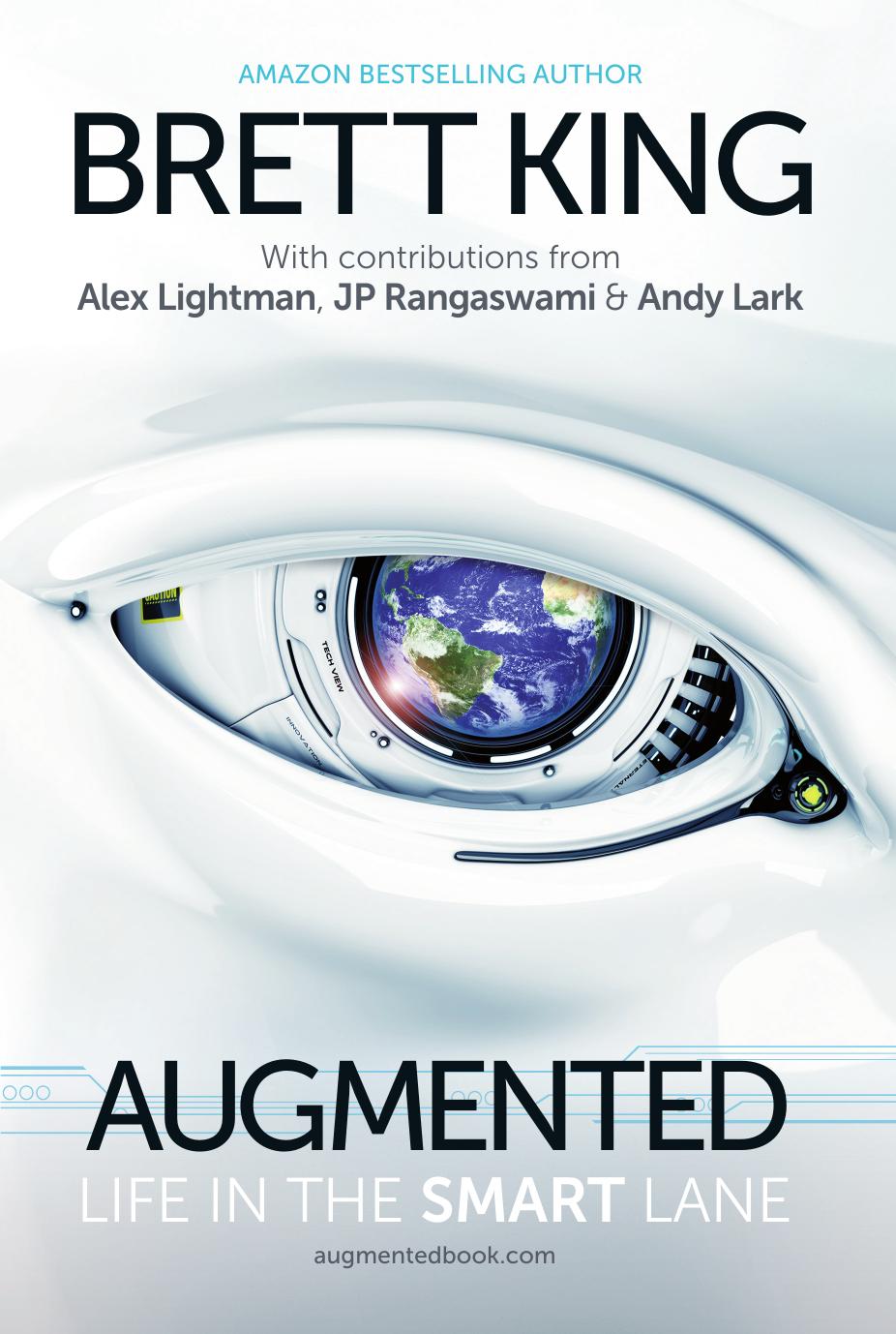Augmented by Brett King

Author:Brett King
Language: eng
Format: epub, pdf
ISBN: 9789814677585
Publisher: Marshall Cavendish International
Augmented Reality, Personal HUDs and Vision Enhancement
No doubt, the temptation for many businesses is to think of augmented vision as a new landscape for bridging the gap between digital and the real world, especially in respect to 3D gaming, geolocation-based marketing and contextual commerce. Today, we’re already getting a little overwhelmed by the volume of notifications, application feedback and offers. Do we really need this sort of data interrupting our field of vision while we’re driving, walking into a shop or working on a document at the office?
Whether delivered by a next-gen Google Glass or a smart contact lens, context is going to be the single key driver to the applicability of information augmenting our field of vision. The information that will be delivered via head-up display implementation needs to be super personalised, and highly contextual. Such information will normally be short-lived, and only there to enhance decision-making in the moment, so by nature will have to be backed by some incredibly sophisticated preprocessing algorithms. This is not about simply seeing a pop-up of whoever is calling you or of someone who has liked your Facebook status update.
From 1942 through to 1955, the Telecommunications Research Establishment arm of the UK’s Royal Air Force and the US Navy’s Office of Naval Research and Development did research on various mock-ups of the early HUD. In 1958, the Royal Navy deployed the Blackburn Buccaneer, a subsonic strike aircraft designed for carrier-borne attack, which carried the first operational HUD. An important principle soon emerged with HUD design on such fighter aircraft. If a pilot had to look down at a radar display or instrumentation, particularly in a combat situation, either the flight dynamics could be altered, or the pilot could lose situational awareness rapidly. Thus, HUDs were designed to maximise the ability of the pilot to focus on the immediate operational requirement of flying the aircraft and making decisions, without having to adjust focus. Once it was determined that pilots using this new technology were becoming operationally better pilots, particularly in high stress, dynamic combat situations, the technology became commonplace in fighter aircraft. In the 1970s, commercial aircraft started to deploy similar technologies and, today, it is standard for aircraft like the Boeing 787 to come with HUD.
Taking this one step further, the principle for a personal head-up display (PHUD) is simple—it should augment your vision for decision-making, but not distract you from your core mission. Sorry Larry Page, but more advertisements served directly to your retina is not going to be viable here…
While early attempts at augmented-reality PHUD designs have focused on putting a lot of data in your field of view, the successful implementation of this technology will be about highly filtered, highly personal, tightly correlated context. Part of the success of the personal head-up display will be the right information at the right time. It won’t be just another “channel” to push more content to. Your vision can be enhanced, but it should never be obstructed. Your decision-making can be augmented, but distractions must be minimised.
Download
This site does not store any files on its server. We only index and link to content provided by other sites. Please contact the content providers to delete copyright contents if any and email us, we'll remove relevant links or contents immediately.
| AI & Machine Learning | Bioinformatics |
| Computer Simulation | Cybernetics |
| Human-Computer Interaction | Information Theory |
| Robotics | Systems Analysis & Design |
Algorithms of the Intelligent Web by Haralambos Marmanis;Dmitry Babenko(16237)
Jquery UI in Action : Master the concepts Of Jquery UI: A Step By Step Approach by ANMOL GOYAL(9389)
Test-Driven Development with Java by Alan Mellor(7737)
Data Augmentation with Python by Duc Haba(7611)
Principles of Data Fabric by Sonia Mezzetta(7381)
Learn Blender Simulations the Right Way by Stephen Pearson(7296)
Microservices with Spring Boot 3 and Spring Cloud by Magnus Larsson(7139)
Hadoop in Practice by Alex Holmes(6589)
RPA Solution Architect's Handbook by Sachin Sahgal(6519)
The Infinite Retina by Robert Scoble Irena Cronin(6218)
Big Data Analysis with Python by Ivan Marin(5937)
Life 3.0: Being Human in the Age of Artificial Intelligence by Tegmark Max(5520)
Pretrain Vision and Large Language Models in Python by Emily Webber(4897)
Infrastructure as Code for Beginners by Russ McKendrick(4658)
Functional Programming in JavaScript by Mantyla Dan(4438)
WordPress Plugin Development Cookbook by Yannick Lefebvre(4386)
The Age of Surveillance Capitalism by Shoshana Zuboff(4252)
Embracing Microservices Design by Ovais Mehboob Ahmed Khan Nabil Siddiqui and Timothy Oleson(4149)
Applied Machine Learning for Healthcare and Life Sciences Using AWS by Ujjwal Ratan(4136)
